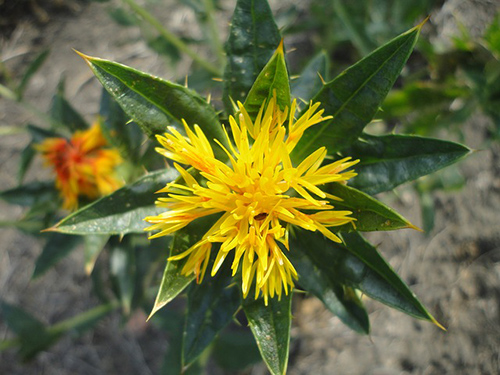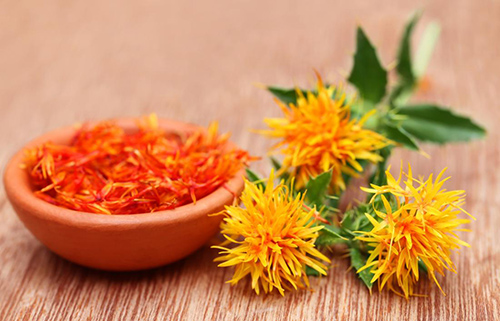Contents
The safflower plant has been used for centuries to obtain an attractive red dye (“Spanish red”). When pink skin color was fashionable, ladies used it to make their faces more beautiful. It has also been used to add color and fun to poor people’s food as a substitute for saffron.
- Premium Safflower Petals – Carthamus tinctorius from 100% Nature

Safflower Plant Scientific Facts
- Scientific name: Carthamus tinctorius L.
- Other names: False saffron.
- French: Carthame.
- Spanish: Cartamo.
- Environment: It is native to the Mediterranean basin, though it was formerly cultivated all over Europe and America. It grows wild in the areas where it has been introduced.
- Description: This is an annual plant of the Compositae family, growing up to one meter high. It has thorny leaves and red or yellow flowers.
- Parts of the plant used medicinally: The flowers and the fruits.
Healing Properties and Indications

The flowers contain several coloring substances of glycosidic type, the most important of which is carthamin. They are sudorific and diuretic and are used for fever, influenza, or cold.
The fruit is rich in oil and is formed by a lesser proportion of linoleic, oleic, palmitic, and stearic acids. Both the fruit and its oil have a strong purgative effect. Moreover, being rich in unsaturated fatty acids, they decrease the level of cholesterol in the blood.

Because of its strong flavor, safflower oil is seldom used. Other plant oils rich in unsaturated fatty acids include soya oil, corn oil, wheat germ oil, and grape seed oil.
How to use Safflower
- Infusion with 60 g of flowers per liter of water. Drink one or two cups daily.
- Oil. A spoonful on an empty stomach has purgative effects.
DISCLAIMER: All content on this website is presented solely for educational and informational objectives. Do not rely on the information provided as a replacement for advice, diagnosis, or treatment from a qualified medical expert. If you are pregnant, nursing, or have any preexisting medical concerns, talk to your doctor before using any herbal or natural medicines.
REFERENCES
- George D. Pamplona-Roger, M.D. “Encyclopedia of Medicinal Plants.” George D. Pamplona-Roger, M.D. Encyclopedia of Medicinal Plants. Ed. Francesc X. Gelabert. vols. 2 San Fernando de Henares: Editorial Safeliz, 2000. 751. Print. [Safflower plant]
- https://www.health.com/safflower-benefits-7970710
- https://www.medicalnewstoday.com/articles/322245
- https://www.ncbi.nlm.nih.gov/pmc/articles/PMC5099570/
Last update on 2025-06-04 / Affiliate links / Images from Amazon Product Advertising API





